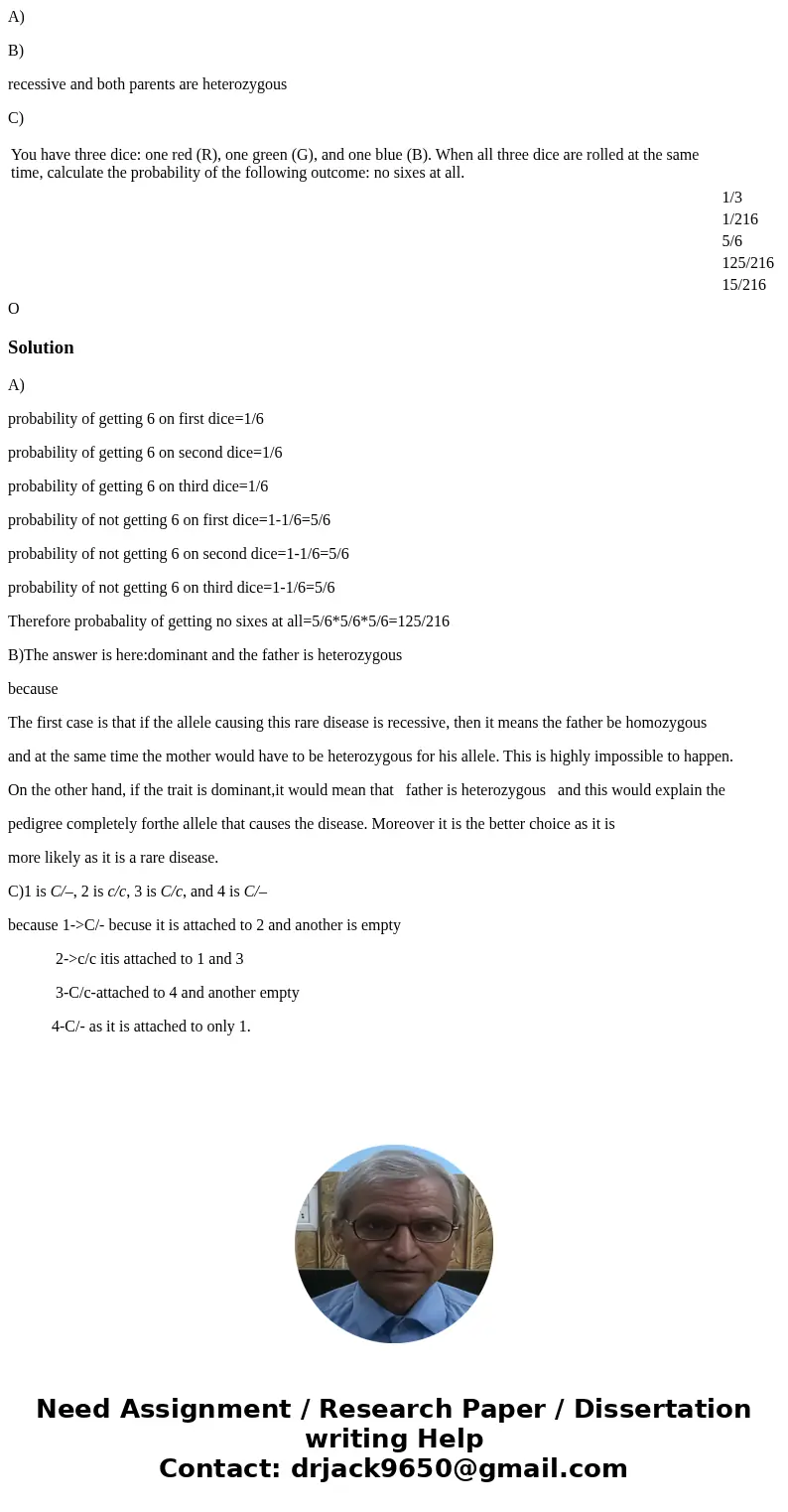A B recessive and both parents are heterozygous C You have t
A)
B)
recessive and both parents are heterozygous
C)
| You have three dice: one red (R), one green (G), and one blue (B). When all three dice are rolled at the same time, calculate the probability of the following outcome: no sixes at all. | |||||||||||
|
Solution
A)
probability of getting 6 on first dice=1/6
probability of getting 6 on second dice=1/6
probability of getting 6 on third dice=1/6
probability of not getting 6 on first dice=1-1/6=5/6
probability of not getting 6 on second dice=1-1/6=5/6
probability of not getting 6 on third dice=1-1/6=5/6
Therefore probabality of getting no sixes at all=5/6*5/6*5/6=125/216
B)The answer is here:dominant and the father is heterozygous
because
The first case is that if the allele causing this rare disease is recessive, then it means the father be homozygous
and at the same time the mother would have to be heterozygous for his allele. This is highly impossible to happen.
On the other hand, if the trait is dominant,it would mean that father is heterozygous and this would explain the
pedigree completely forthe allele that causes the disease. Moreover it is the better choice as it is
more likely as it is a rare disease.
C)1 is C/–, 2 is c/c, 3 is C/c, and 4 is C/–
because 1->C/- becuse it is attached to 2 and another is empty
2->c/c itis attached to 1 and 3
3-C/c-attached to 4 and another empty
4-C/- as it is attached to only 1.

 Homework Sourse
Homework Sourse